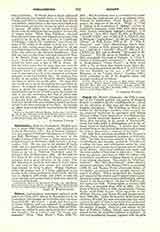

Osbern, hagiographer, sometimes confused with Osbert de Clare alias Osbern de Westminister, b. at Canterbury and brought up by Godric, who was dean from 1058-80. He became a monk, and later, prior of Christ Church, and was ordained by Archbishop Lanfranc. He died probably between 1088 and 1093. He was very skillful in music and is said to have written two treatises “De re musica” and “De vocum consonantiis” (Fétis, “Biog. Music.”, Paris, 1870, VI, 383). But he is known best as a translator of saints’ lives from the Anglo-Saxon and as an original writer. William of Malmesbury (Gesta Regum, II, 166) praises the elegance of his style. Works: 1. “Vita S. Alphegi et de translatione S. Alphegi”, written at Lanfranc‘s command, about 1080 when there arose some dispute concerning Alphege’s sanctity; it is printed in “Acta SS.”, April, II, 631; in Mabillon, “Acta SS. O.S.B.”, saec. vi, 104; in P.L., CXLIX, 375; in Wharton, “Anglia Sacra”, II, 122; see “Gesta Pontificum”, in Rolls Series, 1870, p. 33. 2. “Vita S. Dunstani” and “Liber Miraculorum Sancti Dunstani”, written in 1070; printed in Mabillon op. cit., sc. v, 644-84; in “Acta SS.”, May, IV, 359; in P.L., CXXXVII, 407; and in Stubbs, “Memorials of St. Dunstan”. The life given in Mabillon, op. cit. (p. 684), is probably the work of Eadmer. 3. “Vita S. Odonis archiepiscopi Cantuariensis”. From William of Malmesbury‘s “Gesta Pontif.”, in Rolls Series 1870, p. 24, we learn that Osbern wrote Odo‘s life, but the work has perished; the life in P.L., CXXXIII, 831 and Mabillon, op. cit., saec. v, 287 is not his. Wharton, in his “Anglia Sacra” (London, 1691), 75-87 published a life of St. Bregwin which was wrongly attributed to Osbern.
S. ANSELM PARKER

